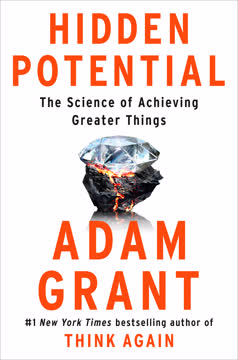Key Takeaways
1. Design is a universal problem-solving approach, not just about aesthetics
"Design is really a way of looking at the world with an eye toward changing it."
Design is problem-solving. It's a methodology for tackling challenges in any field, from product development to social issues. Design thinking involves questioning assumptions, envisioning new possibilities, and creating tangible solutions. This approach can be applied to:
- Business strategies
- Social services
- Personal life decisions
- Technology development
- Environmental challenges
Design is not limited to aesthetics. While visual appeal is important, effective design goes deeper. It considers functionality, user needs, sustainability, and broader impacts. Designers aim to create solutions that are:
- Intuitive to use
- Sustainable and responsible
- Meaningful and impactful
- Adaptable to changing needs
2. Effective design starts with asking "stupid questions" and challenging assumptions
"The questions Kamen raised at the time—Why shouldn't someone in a wheelchair be able to stand and make eye contact with others? Why can't he climb curbs, or even stairs?—fit the definition of what Bruce Mau calls 'stupid questions': the kind that challenge assumptions in such a fundamental way they can make the questioner seem naïve."
Questioning the status quo is essential for innovative design. By challenging long-held assumptions and asking seemingly obvious or naive questions, designers can uncover new perspectives and opportunities for improvement. This approach involves:
- Reframing problems from different angles
- Questioning why things are done a certain way
- Imagining alternative solutions without constraints
Examples of "stupid questions" leading to innovation:
- Why do prescription bottles all look the same? (Led to ClearRx redesign)
- Why can't a wheelchair climb stairs? (Inspired the iBOT wheelchair)
- Why do we need a physical keyboard on a phone? (Resulted in the iPhone's touchscreen)
By embracing a beginner's mindset and being willing to ask fundamental questions, designers can break free from conventional thinking and discover truly innovative solutions.
3. Innovation often comes from connecting unrelated ideas and "jumping fences"
"Designers are so known for questioning that there is a joke acknowledging this tendency: How many designers does it take to change a lightbulb? Answer: Does it have to be a lightbulb?"
Cross-pollination of ideas is a key driver of innovation in design. By making unexpected connections between seemingly unrelated concepts, designers can create novel solutions. This process involves:
- Drawing inspiration from diverse fields
- Combining existing technologies in new ways
- Applying solutions from one domain to another
Examples of innovative connections:
- Velcro: Inspired by burrs sticking to a dog's fur
- Roomba: Combining robotics with vacuum cleaning
- Airbnb: Applying sharing economy principles to hospitality
Designers cultivate this skill by:
- Staying curious about various subjects
- Encouraging interdisciplinary collaboration
- Practicing lateral thinking techniques
By "jumping fences" between different fields of knowledge, designers can create breakthrough innovations that wouldn't be possible through linear thinking alone.
4. Prototyping and iteration are crucial for refining designs and ideas
"Only by making a series of prototypes does IDEO learn what it's doing wrong at each stage, and that learning is incorporated into the next version of the prototype."
Rapid prototyping is a cornerstone of effective design. By quickly creating tangible versions of ideas, designers can test, refine, and improve their concepts. This iterative process involves:
- Building low-fidelity prototypes early in the process
- Testing prototypes with real users
- Gathering feedback and identifying flaws
- Continuously improving and refining the design
Benefits of prototyping:
- Uncovers unforeseen issues and opportunities
- Reduces the risk of costly mistakes later
- Allows for experimentation and creative problem-solving
- Helps communicate ideas more effectively to stakeholders
Embracing failure as a learning opportunity is crucial in this process. Each iteration brings the design closer to an optimal solution, with insights gained from "failures" informing improvements in subsequent versions.
5. Empathy and user research are essential for understanding real needs
"We started with the idea of building a hundred-dollar laptop, and no one has ever done this before, and in order to get there we're going to have to approach this problem completely differently."
Deep user understanding is critical for creating truly effective designs. Designers must go beyond superficial market research to truly empathize with the people they're designing for. This involves:
- Immersive observation of users in their natural environments
- In-depth interviews and conversations with target audiences
- Experiencing the problem firsthand when possible
Key empathic research techniques:
- Shadowing users throughout their day
- Creating personas to represent different user types
- Using "empathy tools" to simulate user experiences (e.g., gloves to simulate arthritis)
By deeply understanding user needs, motivations, and pain points, designers can create solutions that genuinely improve people's lives, rather than just adding features or following trends.
6. Design thinking can transform businesses and social issues
"Designers are so known for questioning that there is a joke acknowledging this tendency: How many designers does it take to change a lightbulb? Answer: Does it have to be a lightbulb?"
Applying design methodology to complex challenges can lead to innovative solutions in various fields. Design thinking principles can be used to:
- Reimagine business models and processes
- Address social and environmental issues
- Improve public services and governance
- Enhance personal decision-making and life planning
Examples of design thinking in action:
- IDEO's redesign of the shopping cart
- Airbnb's transformation of the hospitality industry
- The d.school's application of design thinking to education
Key design thinking steps:
- Empathize with users
- Define the problem
- Ideate potential solutions
- Prototype and test
- Implement and iterate
By adopting a design-centric approach, organizations and individuals can tackle complex problems more creatively and effectively.
7. Constraints often lead to more creative and innovative solutions
"Constraints make you more creative, or at least that's how it works for me. If you've got all kinds of options available to you, then how do you know what to do or where to begin? But if all I've got to work with is some wood and cement and maybe a bicycle wheel, I'm ready to go."
Embracing limitations can spark creativity and lead to unexpected innovations. Constraints force designers to think more creatively and find novel solutions within given parameters. This principle applies to:
- Limited resources or budgets
- Strict timelines or deadlines
- Specific user needs or environmental factors
- Technological or material limitations
Benefits of working with constraints:
- Encourages out-of-the-box thinking
- Leads to more focused and efficient solutions
- Often results in simpler, more elegant designs
- Can spur technological advancements
Examples of innovative designs born from constraints:
- The $100 laptop project (One Laptop Per Child)
- Ikea's flat-pack furniture designs
- Space-saving innovations in urban micro-apartments
By viewing constraints as creative challenges rather than obstacles, designers can produce more innovative and resourceful solutions.
8. Good design considers the entire user experience, not just the product
"Experience design can be seen as good news for innovative companies. It means they can design their way into the public consciousness, even though they may lack big ad budgets."
Holistic experience design goes beyond creating a single product or touchpoint. It considers the entire journey and ecosystem surrounding a product or service. This approach involves:
- Mapping out all user interactions and touchpoints
- Considering emotional and psychological aspects of the experience
- Designing for consistency across different channels and platforms
- Anticipating and addressing potential pain points
Key elements of experience design:
- Pre-purchase expectations and research
- Unboxing and first-use experiences
- Ongoing usage and support
- End-of-life considerations and sustainability
Examples of successful experience design:
- Apple's ecosystem of products, services, and retail stores
- Disney's immersive theme park experiences
- Airbnb's end-to-end travel booking and hosting platform
By focusing on the holistic experience, designers can create more meaningful, memorable, and loyal relationships with users.
9. Collaboration and diverse perspectives enhance the design process
"To respond to the complexity of design problems today, what's required is not one person working alone in a studio—it's more likely to be interdisciplinary teams, and those people need to be able to work effectively together."
Cross-functional teamwork is crucial for tackling complex design challenges. Bringing together diverse perspectives and skill sets leads to more comprehensive and innovative solutions. Effective design collaboration involves:
- Assembling multidisciplinary teams
- Encouraging open communication and idea-sharing
- Balancing different viewpoints and expertise
- Leveraging collective intelligence and creativity
Benefits of collaborative design:
- Broader range of ideas and potential solutions
- More well-rounded and thoroughly considered designs
- Increased likelihood of identifying potential issues early
- Enhanced problem-solving capabilities
Techniques for fostering collaboration:
- Design workshops and brainstorming sessions
- Shared prototyping and iteration processes
- Cross-functional design reviews and feedback loops
- Open-source design platforms and communities
By embracing diverse perspectives and collaborative approaches, designers can create more robust and impactful solutions to complex challenges.
10. Design is an ongoing process of learning, adapting, and reimagining
"Mau believes that if people are really going to live sustainably, and do it in a committed way as opposed to hopping on and off the green bandwagon, they have to find the meaning and the pleasure in it—and to approach it not as an obligatory gesture or dreary chore, but rather as an endlessly stimulating challenge."
Continuous improvement is at the heart of effective design. The design process doesn't end with a finished product; it's an ongoing cycle of learning, adaptation, and reimagination. This mindset involves:
- Regularly reassessing existing designs and solutions
- Staying open to new technologies and methodologies
- Embracing change and evolution in user needs and contexts
- Viewing every project as an opportunity for learning and growth
Key aspects of the ongoing design process:
- Post-launch monitoring and user feedback collection
- Iterative updates and improvements to existing designs
- Exploring new applications and extensions of successful ideas
- Challenging and reimagining even successful designs
Examples of design evolution:
- The continuous refinement of smartphone designs
- Ongoing updates to software user interfaces
- The evolution of automotive design for safety and efficiency
By approaching design as a lifelong learning process, designers can create solutions that remain relevant, effective, and impactful over time.
Last updated:
FAQ
What's Glimmer about?
- Design as Transformation: Glimmer by Warren Berger explores how design can be a transformative tool in life, business, and society. It emphasizes design as a means of problem-solving and innovation, not just aesthetics.
- Structured Approach: The book is divided into four sections: Universal, Business, Social, and Personal, each illustrating different applications of design principles.
- Real-World Examples: Berger uses case studies like the iBOT wheelchair and XO laptop to show how design can tackle complex challenges and improve lives.
Why should I read Glimmer?
- Inspiration for Change: Glimmer inspires readers to rethink challenges in personal and professional contexts, encouraging a mindset of curiosity and creativity.
- Practical Design Principles: The book offers actionable design principles that can be applied to various problems, fostering innovation and a design mindset.
- Broader Perspective: It expands the definition of design, showing its potential as a tool for social change and personal growth.
What are the key takeaways of Glimmer?
- Ask Stupid Questions: Encourages challenging assumptions and conventional wisdom to foster innovative thinking and unexpected solutions.
- Embrace Constraints: Highlights the importance of doing "more with less," leading to creative and resource-efficient solutions.
- Design for Emergence: Emphasizes creating adaptable systems that can grow and evolve, crucial for addressing complex challenges.
What is design thinking as described in Glimmer?
- Empathy-Driven Process: Design thinking starts with understanding user needs, ensuring solutions are relevant and impactful.
- Iterative and Experimental: Involves prototyping, testing, and refining ideas based on feedback, uncovering the best solutions.
- Cross-Disciplinary Collaboration: Encourages collaboration across fields, enhancing creativity and leading to innovative solutions.
How does Glimmer define design?
- Problem-Solving Approach: Design is about identifying problems and creating solutions that improve lives, not just creating objects.
- Design Thinking: Combines empathy, creativity, and rationality to address complex challenges, focusing on user needs and iterative prototyping.
- Universal Application: Design principles can be applied to any challenge, making it a valuable tool for positive change.
What is the "glimmer moment" mentioned in Glimmer?
- Initial Insight: Refers to the spark of inspiration when a designer sees a possibility for change, marking the beginning of a new idea.
- Catalyst for Action: Serves as a catalyst for further exploration and development, encouraging pursuit of innovative solutions.
- Recognizing Potential: Emphasizes recognizing potential in everyday situations, encouraging openness to new ideas.
How can I apply the principles from Glimmer in my life?
- Start Asking Questions: Challenge assumptions by asking "stupid questions" about personal or professional challenges.
- Embrace Constraints: Use limitations as opportunities to foster creativity and innovation in solutions.
- Design Your Experience: Align actions and decisions with values to create a more meaningful experience.
What role does empathy play in design according to Glimmer?
- Understanding User Needs: Empathy helps designers understand the needs and experiences of users, creating relevant solutions.
- Building Connections: Fosters trust and stronger connections with users, essential for resonant products and services.
- Guiding Design Decisions: Informs decisions throughout the process, ensuring alignment with user needs and expectations.
How does Glimmer suggest businesses can innovate?
- Design Thinking Approach: Encourages deep understanding of user needs and iterative prototyping for innovative solutions.
- Collaboration and Interdisciplinary Teams: Highlights the importance of diverse teams for creativity and comprehensive solutions.
- Focus on User Experience: Prioritizes understanding user interactions to create engaging and effective offerings.
What is the significance of "working the metaphor" in Glimmer?
- Transformational Metaphors: Using metaphors to redefine identity and approach, leading to innovative thinking.
- Shifting Perspectives: Encourages exploring new possibilities and standing out in a crowded marketplace.
- Cohesive Brand Messaging: Aligns actions and communications with a central metaphor to strengthen brand identity.
What are some examples of design activism in Glimmer?
- Architecture for Humanity: Provides design solutions for humanitarian crises, showcasing design's role in social issues.
- Project H Design: Creates socially conscious solutions for communities, empowering marginalized populations.
- Community Engagement: Involves communities in the design process, tailoring solutions to specific needs for effectiveness.
What are the best quotes from Glimmer and what do they mean?
- “Design is the human capacity to plan and produce desired outcomes.”: Highlights design as a strategic process for achieving goals.
- “A designer does not have the luxury of cynicism.”: Emphasizes optimism as essential for innovation and belief in change.
- “Everything communicates.”: Suggests that every action sends a message, encouraging alignment with brand values.
Review Summary
CAD Monkeys, Dinosaur Babies, and T-Shaped People receives mostly positive reviews for its exploration of design thinking across various fields. Readers appreciate the numerous case studies and insights into how design can transform businesses, products, and lives. Some find the book's broad application of "design" refreshing, while others critique it as overreaching. The writing style is described as engaging, though a few readers note it can be repetitive or slow in parts. Overall, it's praised for offering practical tools and inspiring a new perspective on problem-solving and innovation.
Similar Books







Download PDF
Download EPUB
.epub digital book format is ideal for reading ebooks on phones, tablets, and e-readers.






